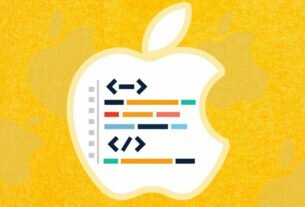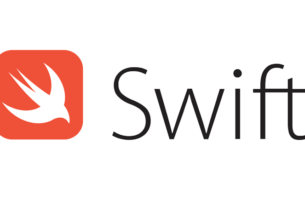Question or problem with Swift language programming:
The Swift Programming Language guide has the following example:
class Person {
let name: String
init(name: String) { self.name = name }
var apartment: Apartment?
deinit { println("\(name) is being deinitialized") }
}
class Apartment {
let number: Int
init(number: Int) { self.number = number }
var tenant: Person?
deinit { println("Apartment #\(number) is being deinitialized") }
}
var john: Person?
var number73: Apartment?
john = Person(name: "John Appleseed")
number73 = Apartment(number: 73)
//From Apple's “The Swift Programming Language” guide (https://developer.apple.com/library/content/documentation/Swift/Conceptual/Swift_Programming_Language/AutomaticReferenceCounting.html)
Then when assigning the apartment to the person, they use an exclamation point to “unwrap the instance”:
john!.apartment = number73
What does it mean to “unwrap the instance”? Why is it necessary? How is it different from just doing the following:
john.apartment = number73
I’m very new to the Swift language. Just trying to get the basics down.
UPDATE:
The big piece of the puzzle that I was missing (not directly stated in the answers – at least not at the time of writing this) is that when you do the following:
var john: Person?
that does NOT mean that “john is of type Person and it might be nil”, as I originally thought. I was simply misunderstanding that Person and Person? are completely separate types. Once I grasped that, all of the other ?, ! madness, and the great answers below, made a lot more sense.
How to solve the problem:
Solution 1:
What does it mean to “unwrap the instance”? Why is it necessary?
As far as I can work out (this is very new to me, too)…
The term “wrapped” implies we should think of an Optional variable as a present, wrapped in shiny paper, which might (sadly!) be empty.
When “wrapped”, the value of an Optional variable is an enum with two possible values (a little like a Boolean). This enum describes whether the variable holds a value (Some(T)), or not (None).
If there is a value, this can be obtained by “unwrapping” the variable (obtaining the T from Some(T)).
How is john!.apartment = number73 different from john.apartment = number73? (Paraphrased)
If you write the name of an Optional variable (eg text john, without the !), this refers to the “wrapped” enum (Some/None), not the value itself (T). So john isn’t an instance of Person, and it doesn’t have an apartment member:
john.apartment // 'Person?' does not have a member named 'apartment'
The actual Person value can be unwrapped in various ways:
- “forced unwrapping”:
john!(gives thePersonvalue if it exists, runtime error if it is nil) - “optional binding”:
if let p = john { println(p) }(executes theprintlnif the value exists) - “optional chaining”:
john?.learnAboutSwift()(executes this made-up method if the value exists)
I guess you choose one of these ways to unwrap, depending upon what should happen in the nil case, and how likely that is. This language design forces the nil case to be handled explicitly, which I suppose improves safety over Obj-C (where it is easy to forget to handle the nil case).
Update:
The exclamation mark is also used in the syntax for declaring “Implicitly Unwrapped Optionals”.
In the examples so far, the john variable has been declared as var john:Person?, and it is an Optional. If you want the actual value of that variable, you must unwrap it, using one of the three methods above.
If it were declared as var john:Person! instead, the variable would be an Implicitly Unwrapped Optional (see the section with this heading in Apple’s book). There is no need to unwrap this kind of variable when accessing the value, and john can be used without additional syntax. But Apple’s book says:
Implicitly unwrapped optionals should not be used when there is a possibility of a variable becoming nil at a later point. Always use a normal optional type if you need to check for a nil value during the lifetime of a variable.
Update 2:
The article “Interesting Swift Features” by Mike Ash gives some motivation for optional types. I think it is great, clear writing.
Update 3:
Another useful article about the implicitly unwrapped optional use for the exclamation mark: “Swift and the Last Mile” by Chris Adamson. The article explains that this is a pragmatic measure by Apple used to declare the types used by their Objective-C frameworks which might contain nil. Declaring a type as optional (using ?) or implicitly unwrapped (using !) is “a tradeoff between safety and convenience”. In the examples given in the article, Apple have chosen to declare the types as implicitly unwrapped, making the calling code more convenient, but less safe.
Perhaps Apple might comb through their frameworks in the future, removing the uncertainty of implicitly unwrapped (“probably never nil”) parameters and replacing them with optional (“certainly could be nil in particular [hopefully, documented!] circumstances”) or standard non-optional (“is never nil”) declarations, based on the exact behaviour of their Objective-C code.
Solution 2:
Here is what I think is the difference:
var john: Person?
Means john can be nil
john?.apartment = number73
The compiler will interpret this line as:
if john != nil {
john.apartment = number73
}
While
john!.apartment = number73
The compiler will interpret this line as simply:
john.apartment = number73
Hence, using ! will unwrap the if statement, and make it run faster, but if john is nil, then a runtime error will happen.
So wrap here doesn’t mean it is memory wrapped, but it means it is code wrapped, in this case it is wrapped with an if statement, and because Apple pay close attention to performance in runtime, they want to give you a way to make your app run with the best possible performance.
Update:
Getting back to this answer after 4 years, as I got the highest reputations from it in Stackoverflow 🙂
I misunderstood a little the meaning of unwrapping at that time. Now after 4 years I believe the meaning of unwrapping here is to expand the code from its original compact form. Also it means removing the vagueness around that object, as we are not sure by definition if it is nil or not. Just like the answer of Ashley above, think about it as a present which could contain nothing in it. But I still think that the unwrapping is code unwrapping and not memory based unwrapping as using enum.
Solution 3:
TL;DR
What does an exclamation mark mean in the Swift language?
The exclamation mark effectively says, “I know that this optional
definitely has a value; please use it.” This is known as forced unwrapping of the optional’s value:
Example
let possibleString: String? = "An optional string." print(possibleString!) // requires an exclamation mark to access its value // prints "An optional string." let assumedString: String! = "An implicitly unwrapped optional string." print(assumedString) // no exclamation mark is needed to access its value // prints "An implicitly unwrapped optional string."
Source: https://developer.apple.com/library/content/documentation/Swift/Conceptual/Swift_Programming_Language/TheBasics.html#//apple_ref/doc/uid/TP40014097-CH5-XID_399
Solution 4:
If john were an optional var (declared thusly)
var john: Person?
then it would be possible for john to have no value (in ObjC parlance, nil value)
The exclamation point basically tells the compiler “I know this has a value, you don’t need to test for it”. If you didn’t want to use it, you could conditionally test for it:
if let otherPerson = john { otherPerson.apartment = number73 }
The interior of this will only evaluate if john has a value.
Solution 5:
Some big picture perspective to add to the other useful but more detail-centric answers:
In Swift, the exclamation point appears in several contexts:
- Forced unwrapping:
let name = nameLabel!.text - Implicitly unwrapped optionals:
var logo: UIImageView! - Forced casting:
logo.image = thing as! UIImage - Unhandled exceptions:
try! NSJSONSerialization.JSONObjectWithData(data, [])
Every one of these is a different language construct with a different meaning, but they all have three important things in common:
1. Exclamation points circumvent Swift’s compile-time safety checks.
When you use ! in Swift, you are essentially saying, “Hey, compiler, I know you think an error could happen here, but I know with total certainty that it never will.”
Not all valid code fits into the box of Swift’s compile-time type system — or any language’s static type checking, for that matter. There are situations where you can logically prove that an error will never happen, but you can’t prove it to the compiler. That’s why Swift’s designers added these features in the first place.
However, whenever you use !, you’re ruling out having a recovery path for an error, which means that…
2. Exclamation points are potential crashes.
An exclamation point also says, “Hey Swift, I am so certain that this error can never happen that it’s better for you to crash my whole app than it is for me to code a recovery path for it.”
That’s a dangerous assertion. It can be the correct one: in mission-critical code where you have thought hard about your code’s invariants, it may be that bogus output is worse than a crash.
However, when I see ! in the wild, it’s rarely used so mindfully. Instead, it too often means, “this value was optional and I didn’t really think too hard about why it could be nil or how to properly handle that situation, but adding ! made it compile … so my code is correct, right?”
Beware the arrogance of the exclamation point. Instead…
3. Exclamation points are best used sparingly.
Every one of these ! constructs has a ? counterpart that forces you to deal with the error/nil case:
- Conditional unwrapping:
if let name = nameLabel?.text { ... } - Optionals:
var logo: UIImageView? - Conditional casts:
logo.image = thing as? UIImage - Nil-on-failure exceptions:
try? NSJSONSerialization.JSONObjectWithData(data, [])
If you are tempted to use !, it is always good to consider carefully why you are not using ? instead. Is crashing your program really the best option if the ! operation fails? Why is that value optional/failable?
Is there a reasonable recovery path your code could take in the nil/error case? If so, code it.
If it can’t possibly be nil, if the error can never happen, then is there a reasonable way to rework your logic so that the compiler knows that? If so, do it; your code will be less error-prone.
There are times when there is no reasonable way to handle an error, and simply ignoring the error — and thus proceeding with wrong data — would be worse than crashing. Those are the times to use force unwrapping.
I periodically search my entire codebase for ! and audit every use of it. Very few usages stand up to scrutiny. (As of this writing, the entire Siesta framework has exactly two instances of it.)
That’s not to say you should never use ! in your code — just that you should use it mindfully, and never make it the default option.



